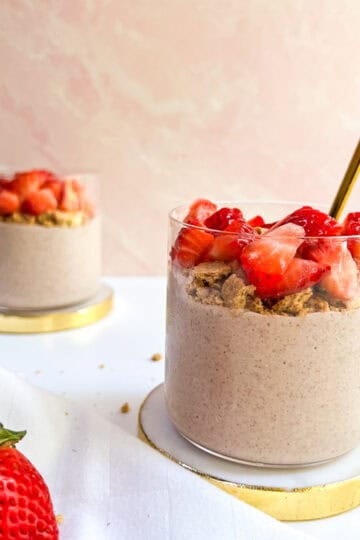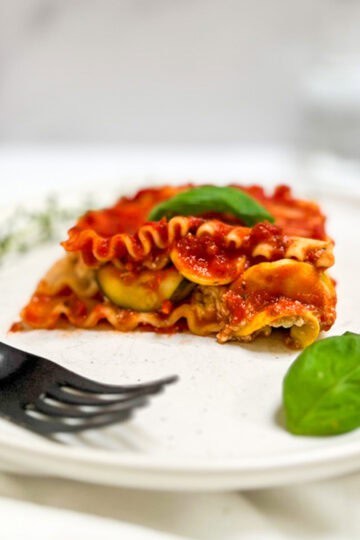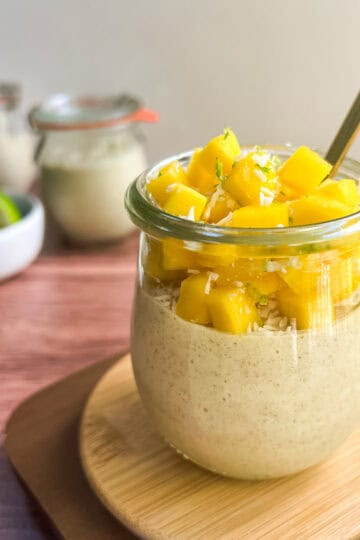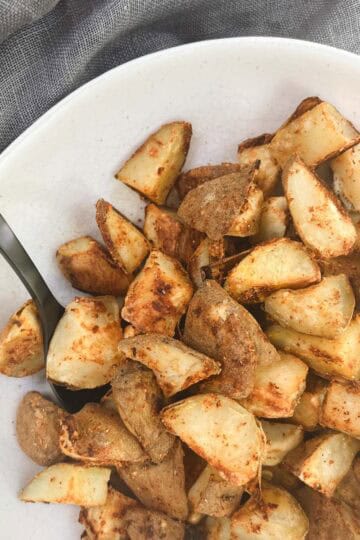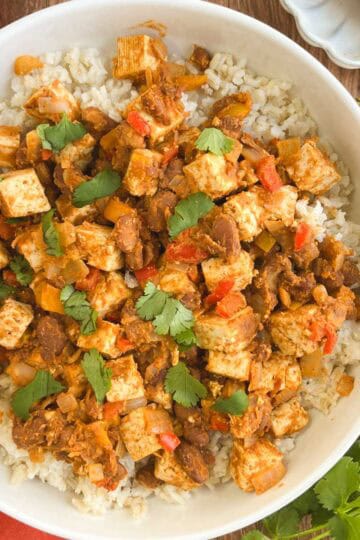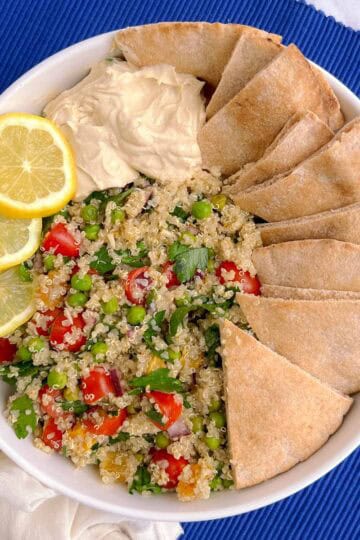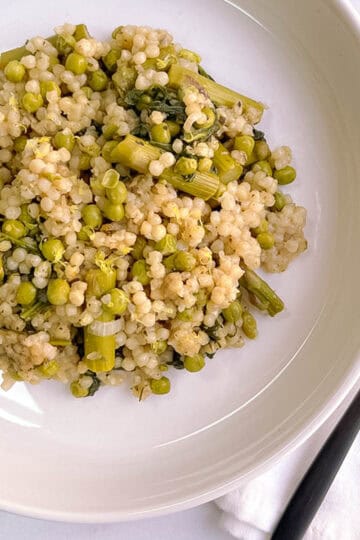This vegan tuna salad comes together in less than 10 minutes and tastes better than the real thing! Enjoy this versatile, oil-free tuna substitute on wraps, sandwiches, or crackers, or to top off a green salad.
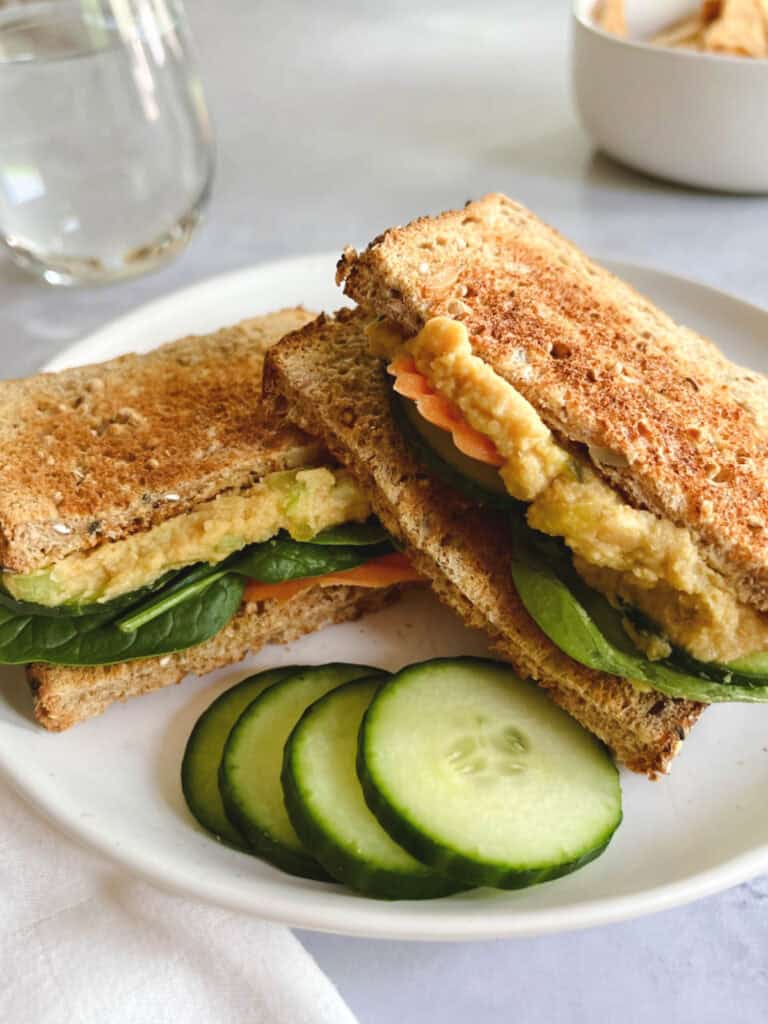
Ah, tuna salad. I had a love/hate relationship with it in my pre-vegan days. Most of the versions I tried were a mayonnaise-laden, tasteless mess. Occasionally, however, a bright, flavorful version came along that made my taste buds sing. This recipe is inspired by those versions. Here, crunchy celery and tangy bursts of pickle elevate the humble chickpea in a delicious take on a classic you’ll find yourself making time and again.
Why you’ll love this oil-free vegan tuna salad
This protein-packed vegan tuna salad is healthy, tasty, and super easy to make. It is especially good for meal prep because it keeps well in the fridge and you can change how you serve it everyday to add some variety. Serving suggestions include:
- Whole-wheat tuna salad wrap
- Scoop on a big green salad
- Top with vegan cheese for a tuna melt
- Enjoy with crackers and veggies as a part of a vegan charcuterie plate
You really can’t go wrong!
Ingredients
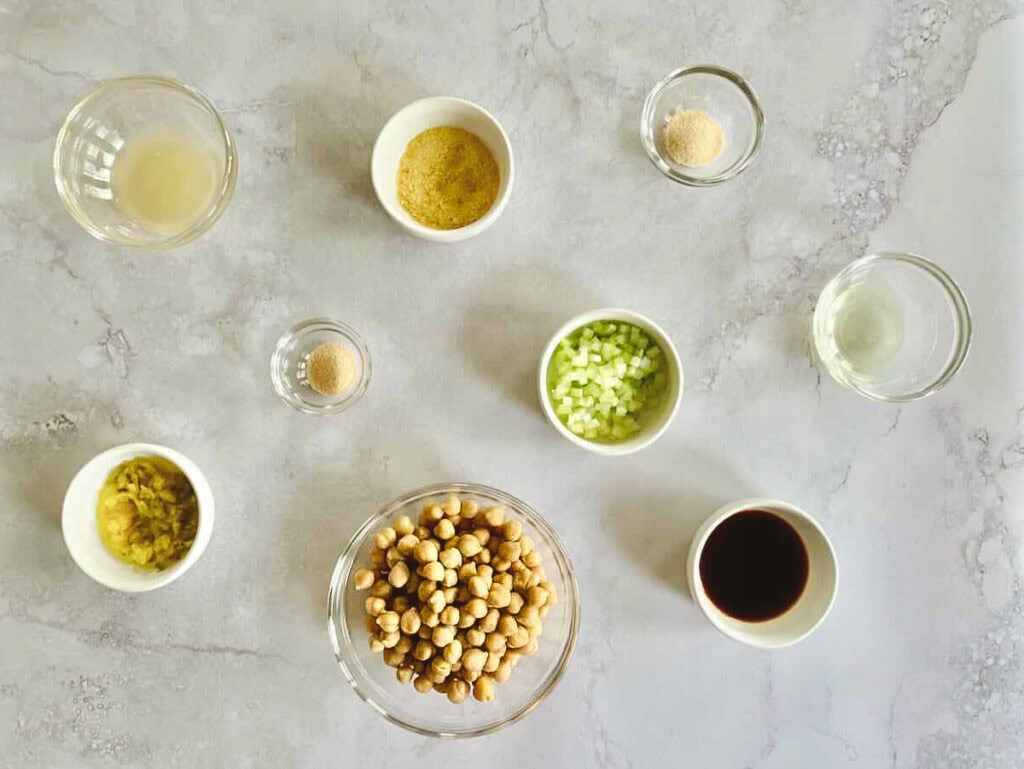
- Canned chickpeas: Drain the can over a measuring cup or other container to reserve the liquid (aquafaba)—you’ll need a small amount for this recipe and can freeze the rest in an ice cube tray to use in future recipes. No need to remove the chickpea “skin” (as recommended in some hummus recipes). Here, the flaky “skin” helps create the tuna-like texture.
- Aquafaba: Aquafaba is chickpea brine—the liquid from the chickpea can. It contains trace amounts of nutrients from the chickpeas. It is most commonly used as an egg substitute. Here, it adds a little thickness and cohesiveness to the chickpea mixture. Feel free to omit it or replace it with a splash of water.
- Nutritional yeast: This flaky, low-sodium seasoning adds a savory flavor. Nutritional yeast also contains a range of vitamins (B vitamins in particular) and trace minerals.
- Low-sodium tamari: Similar in taste to soy sauce, but with less sodium and typically gluten-free.
- Lemon juice: Adds a natural brightness.
- Garlic powder: A convenient alternative to fresh garlic. Garlic powder has heart-healthy benefits, including helping improve artery function and supporting healthy blood pressure.
- Onion powder: Like garlic powder, onion powder’s benefits include supporting healthy blood vessels.
- Dill pickle relish: Adds flavor and crunch.
- Celery: For crunch. Celery is low in calories, high in fiber, and has antioxidant properties.
Instructions
If you don’t have a food processor, mash the chickpeas with a fork in a large bowl until they are mostly mashed but still have some texture. Then, stir in the aquafaba, nutritional yeast, low-sodium tamari, lemon juice, garlic powder, and onion powder.
If you have a food processor, prep is even easier. Simply add the chickpeas, aquafaba, nutritional yeast, low-sodium tamari, lemon juice, garlic powder, and onion powder to a food processor. Pulse on the Chop setting just to the point where you do not see any whole chickpeas (partial chickpeas are okay). For me, this takes about 10 to 12 pulses in a mini food processor, but food processors can vary significantly, so yours may take more or less.
When in doubt, it is better to err on the side of being less blended than over-blended. If you blend too much, you’ll lose the tuna-like texture and the mixture will be more like hummus. Transfer the chickpea mixture from the food processor to a large bowl.
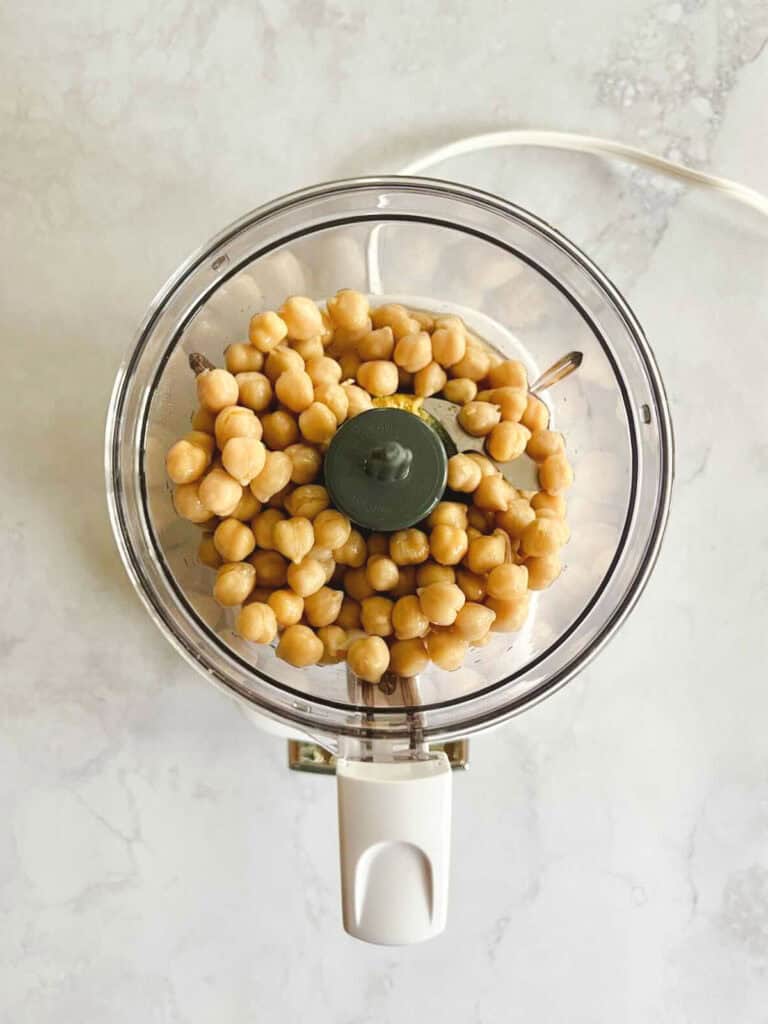
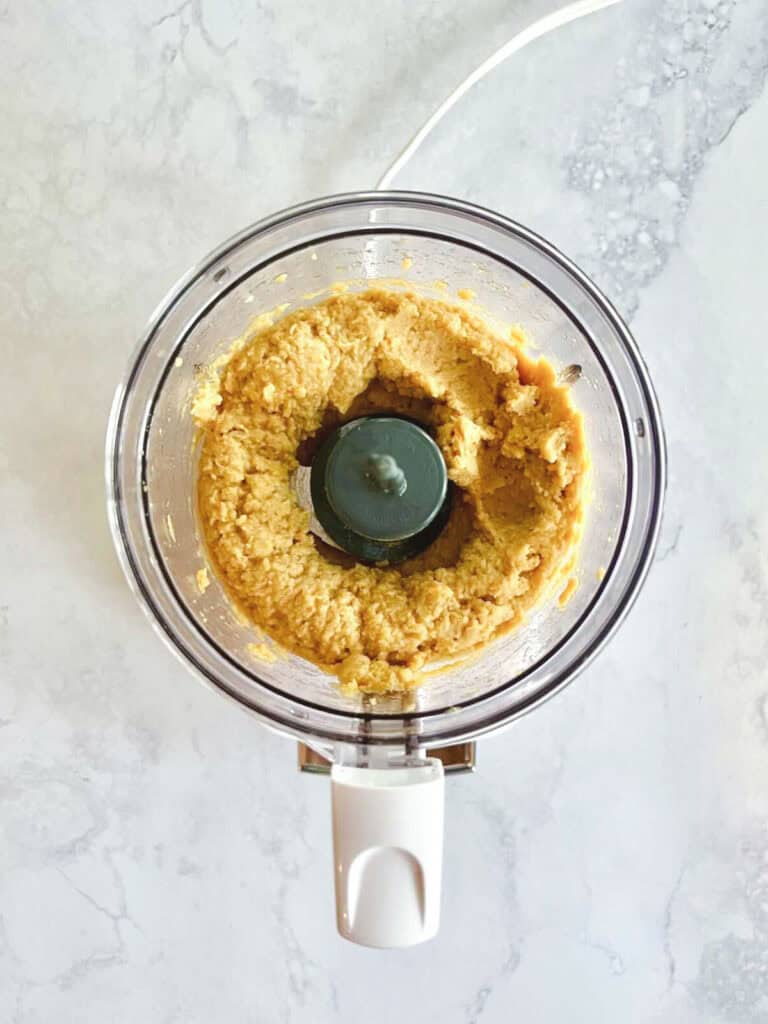
Add the pickle relish and celery to the large bowl, along with cracked black pepper, to taste. Stir to combine.
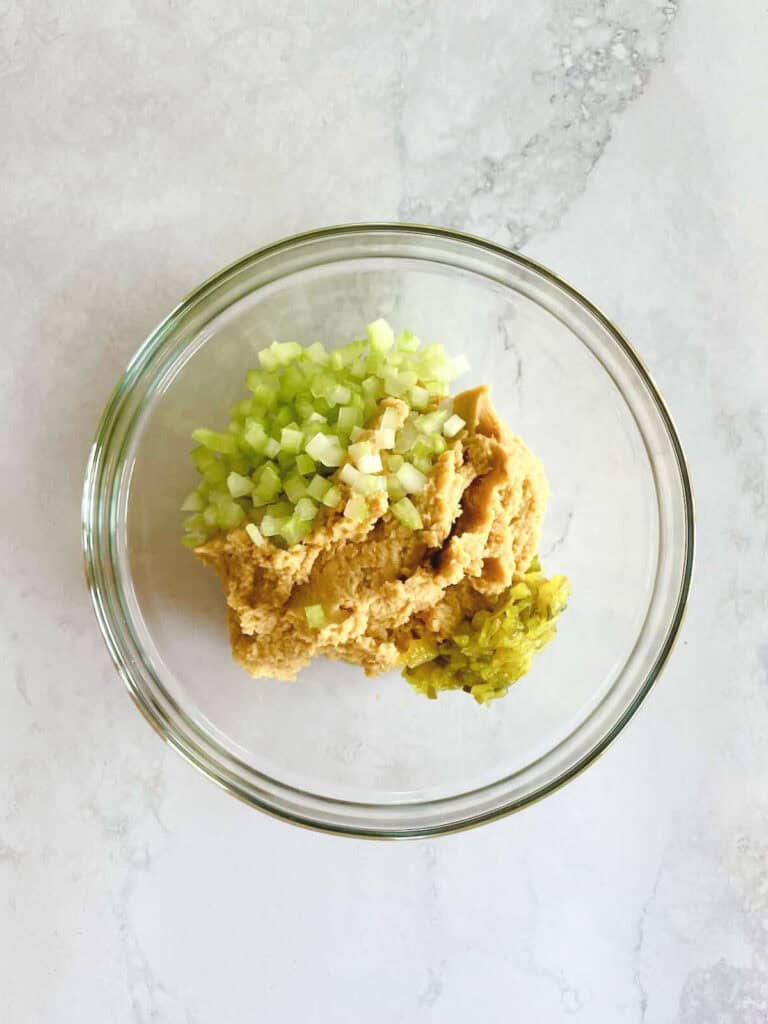
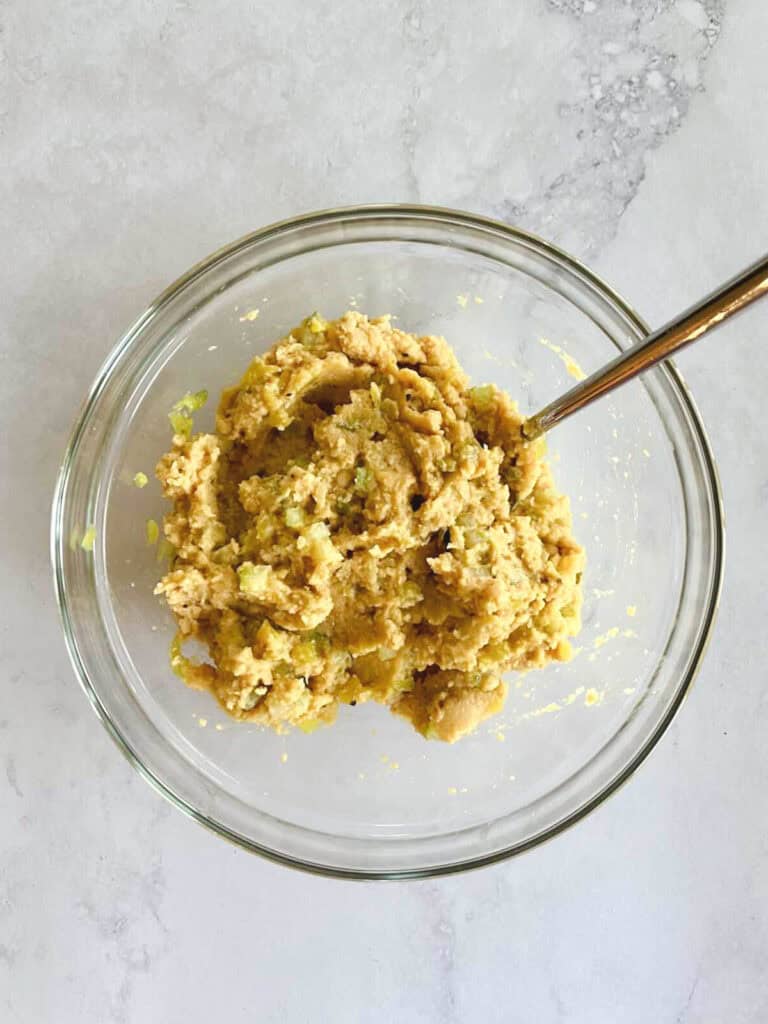
Enjoy plain or on a sandwich, wrap, or salad.
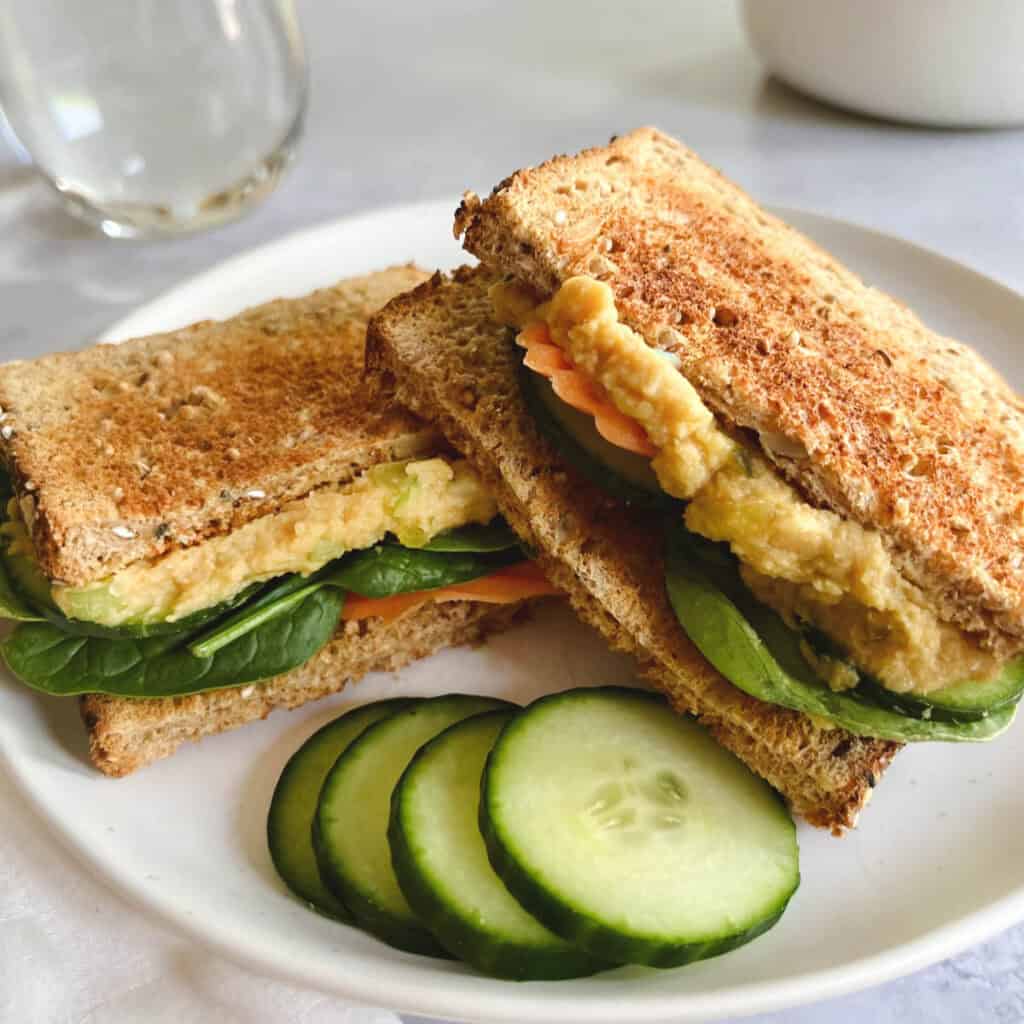
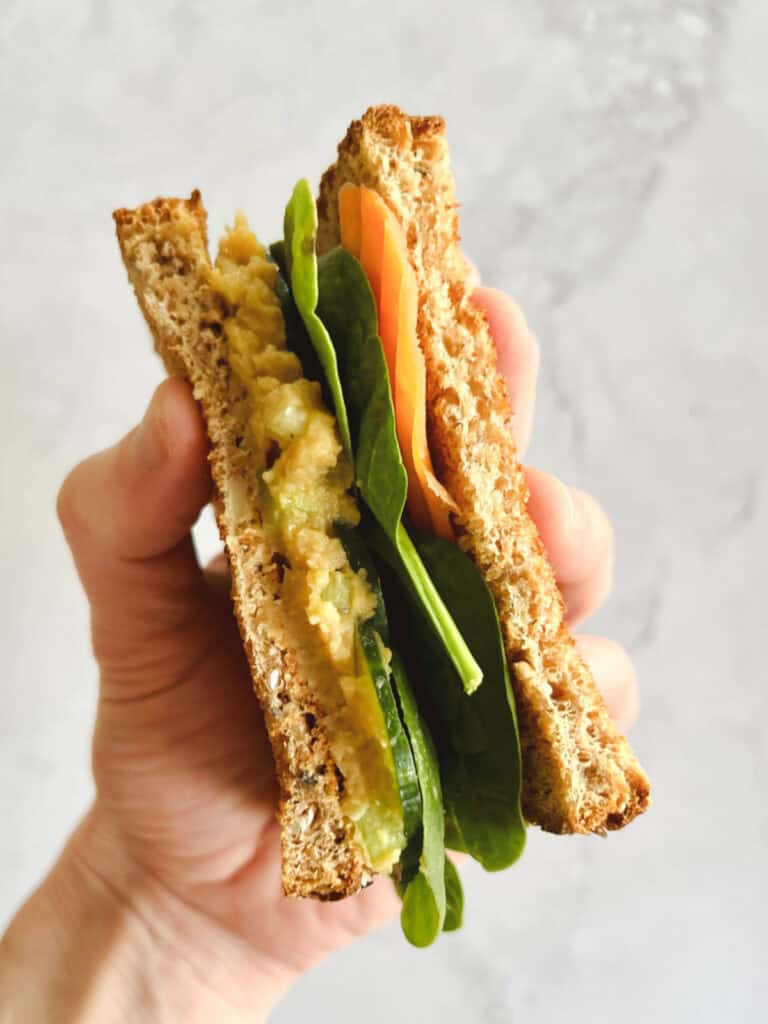
FAQ
No—either method is fine. I prefer to use a food processor because it helps blend everything evenly. Using a fork may take a little work to achieve a similar result and likely will result in a coarser texture. Both versions, however, are equally delicious!
It’s not the end of the world! You’ll simply end up with a dill-pickle-flavored hummus with a celery crunch. Basically everything you love about vegan tuna salad except a bit more spreadable.
Yes! This is one of the great things about this recipe. It stays fresh for several days in the fridge and actually tastes better over time as the flavors merge.
Related
Other recipes to try:
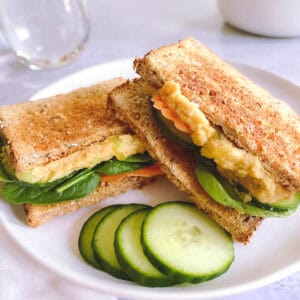
The Best Vegan Tuna Salad (Oil-Free)
Equipment
- 1 food processor (optional)
Ingredients
- 1 15-ounce can chickpeas with liquid (aquafaba) reserved
- 1½ tablespoons aquafaba
- 1 tablespoon nutritional yeast
- 1 tablespoon low-sodium tamari
- 1 tablespoon lemon juice (juice of approximately ½ a lemon)
- ½ teaspoon garlic powder
- ½ teaspoon onion powder
- 2 tablespoons dill pickle relish
- ⅓ cup celery (approximately 1 stalk); finely diced
- cracked black pepper to taste
Instructions
- Prepare the chickpea mixture (food processor method): Add the chickpeas, aquafaba, nutritional yeast, low-sodium tamari, lemon juice, garlic powder, and onion powder to a food processor (a mini food processor is great for this if you have one). Pulse just until the mixture is still textured but you do not see any whole chickpeas (about 10 to 12 pulses on the Chop setting in a mini food processor). The texture should be slightly rougher in appearance than hummus—blending too much will cause it to become too smooth and lose the tuna-like texture. Transfer the blended mixture to a large bowl.
- Alternatively, prepare the chickpea mixture by hand: In a large bowl, mash the chickpeas with a fork until they are mostly mashed but still have some texture. Stir in the aquafaba, nutritional yeast, low-sodium tamari, lemon juice, garlic powder, and onion powder.
- Add the remaining ingredients: After blending the mixture in a food processor or by hand, stir in the pickle relish and celery. Add cracked black pepper, to taste.
Notes
- To reduce the sodium content, reduce the amount of pickle relish and/or the low-sodium tamari. The taste will not be as strong but it will still have flavor.
- If you like more crunch and a stronger onion flavor, feel free to replace the onion powder with ¼ cup of finely diced red onion.
- Store unused vegan tuna salad in the fridge. Best used within 5 days.

